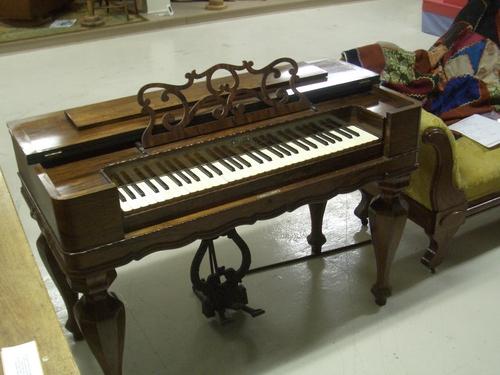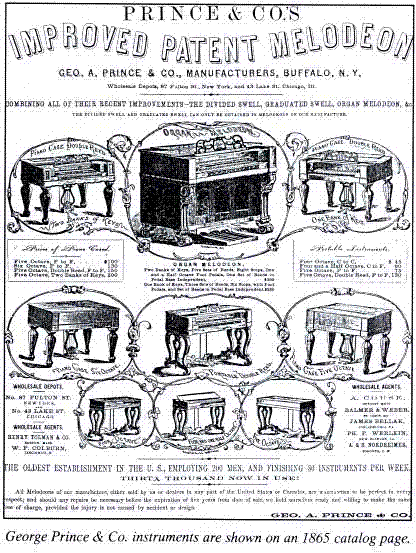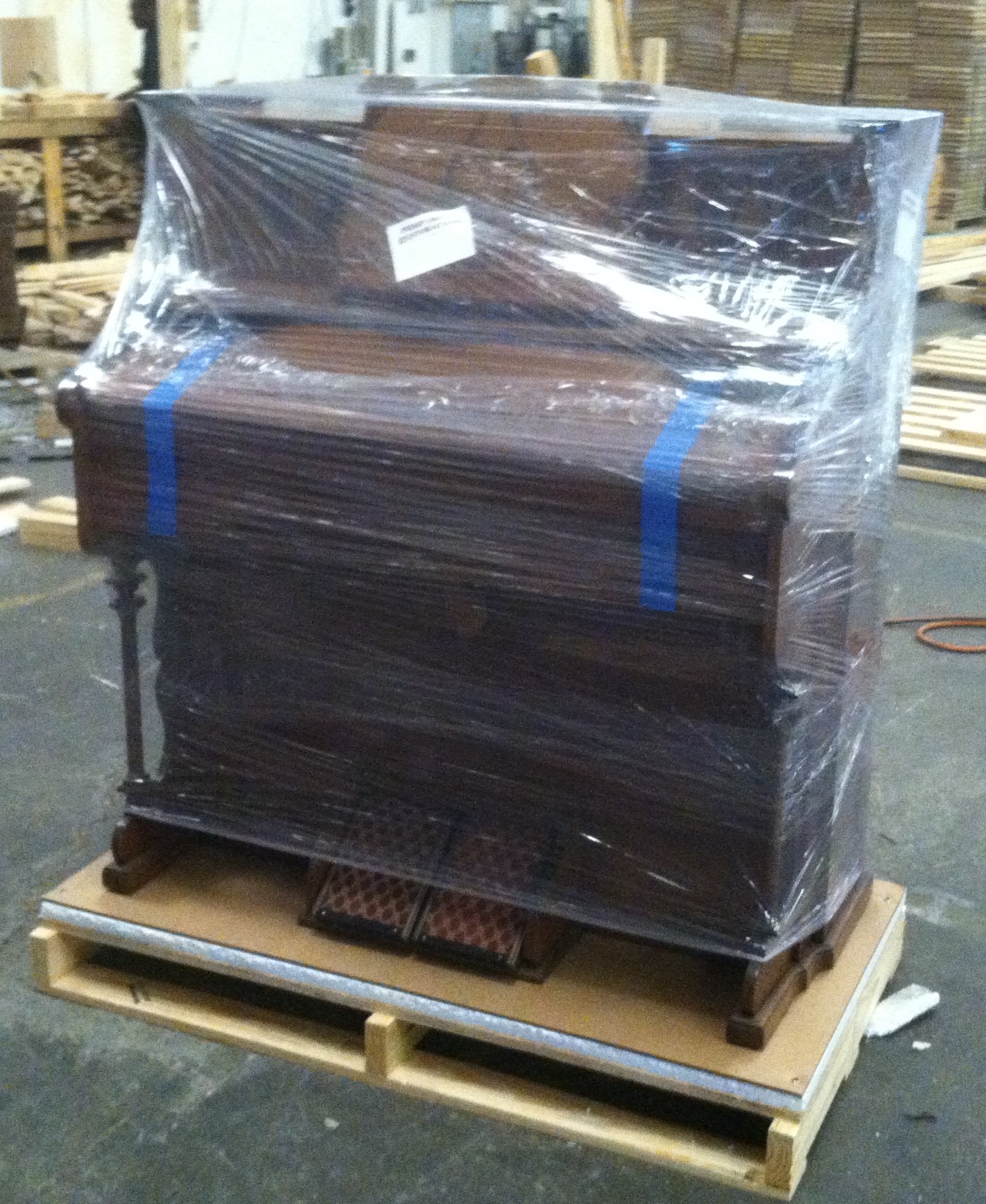|
Antique Organs |
Antique Organs |
Melodeons Came Before Pump OrgansThe major difference between the two is the melodeon produces its tones by drawing air in through suction. The air passes over metal reeds, activated by foot pedal bellows. The instrument's predecessor, the European harmonium, was played by expelling air from within by compressing the bellows. By using suction on free reeds, the melodeon inhibits the propagation of overtones by drawing wind pulses into itself, rather than propelling them outward toward the listener. The "improved melodeon," which eventually brought tonal, harmonious musical pleasure to millions, was invented in Buffalo, New York (of all places). Two Yankee artisans, Jeremiah Carhart of Poughkeepsie and Elias Parkman Needham of Delhi, joined the swelling populace of Buffalo around 1835. Common interests drew the two young men together. They soon combined their inventive energies and their skills with the lathe, saw and mechanical tools to develop the improved melodeon, or the American pump organ. Of great significance tonally was the switch from force or pressure bellows (as in the harmonium) to the improved melodeon's suction bellows. This achieved something close to the sound of the pipe organ, reaching a major musical milestone. The patent of this suction principle was secured by Jeremiah Carhart on Dec. 28, 1846 (U.S. Patent Office No. 4912). After years of experiment and tinkering, this innovative and historic invention finally materialized while Carhart and Needham were in the employ of George A. Prince, owner and proprietor of the George A. Prince & Co. Music Store at 200 Main St.
|
Click Here & Email Me Your Questions
Learn more about the Customer's Restoration Photo Album CD!
(click picture to view)
See my crate building process for shipping restored organs

KI4LUK
Pump Organ Restorations
Rod Fudge, Owner and Technician
www.pumporganrestorations.com
All content Copyright © 2009-2023 Pump Organ Restorations · All Rights Reserved · Site Map
Hosted by Bluehost




